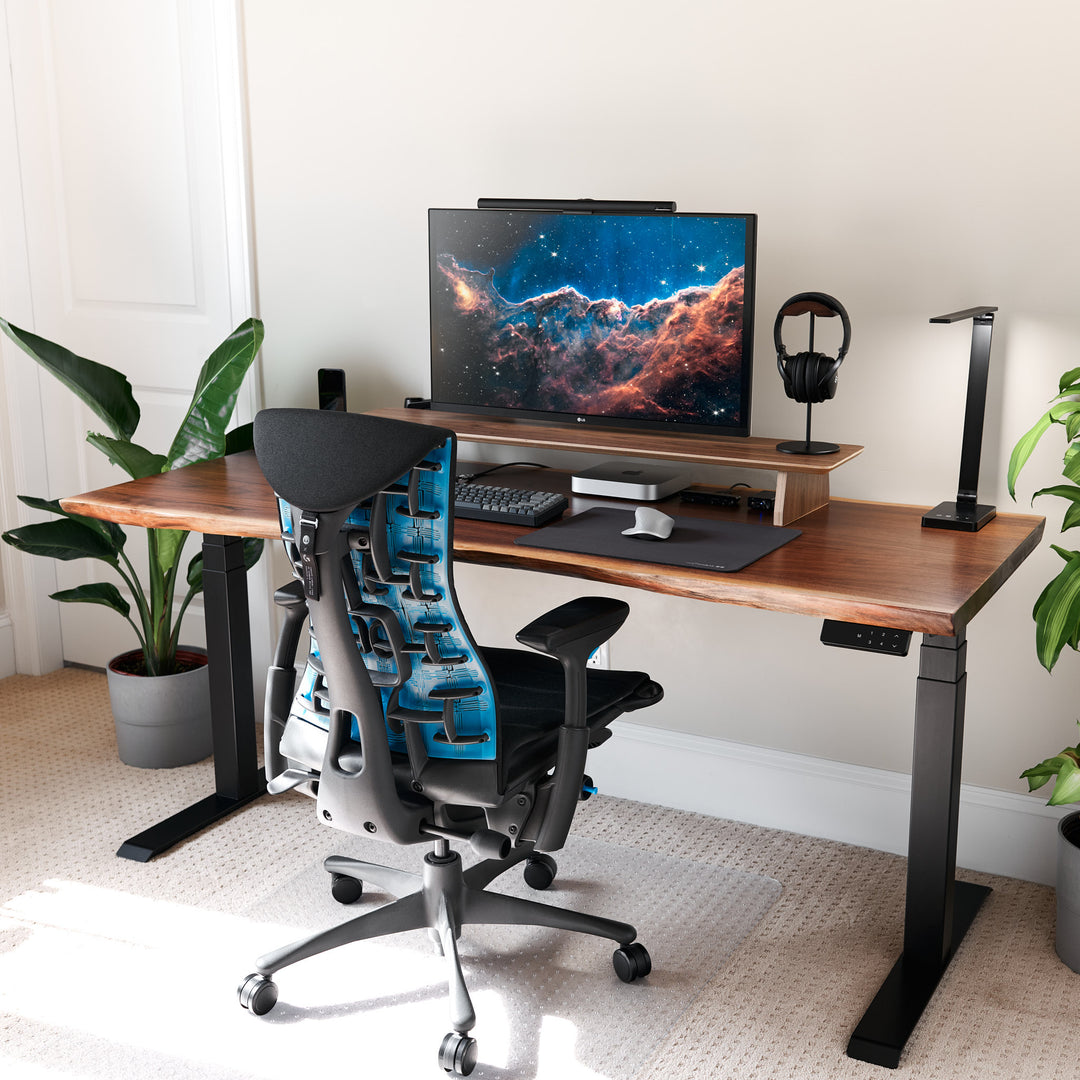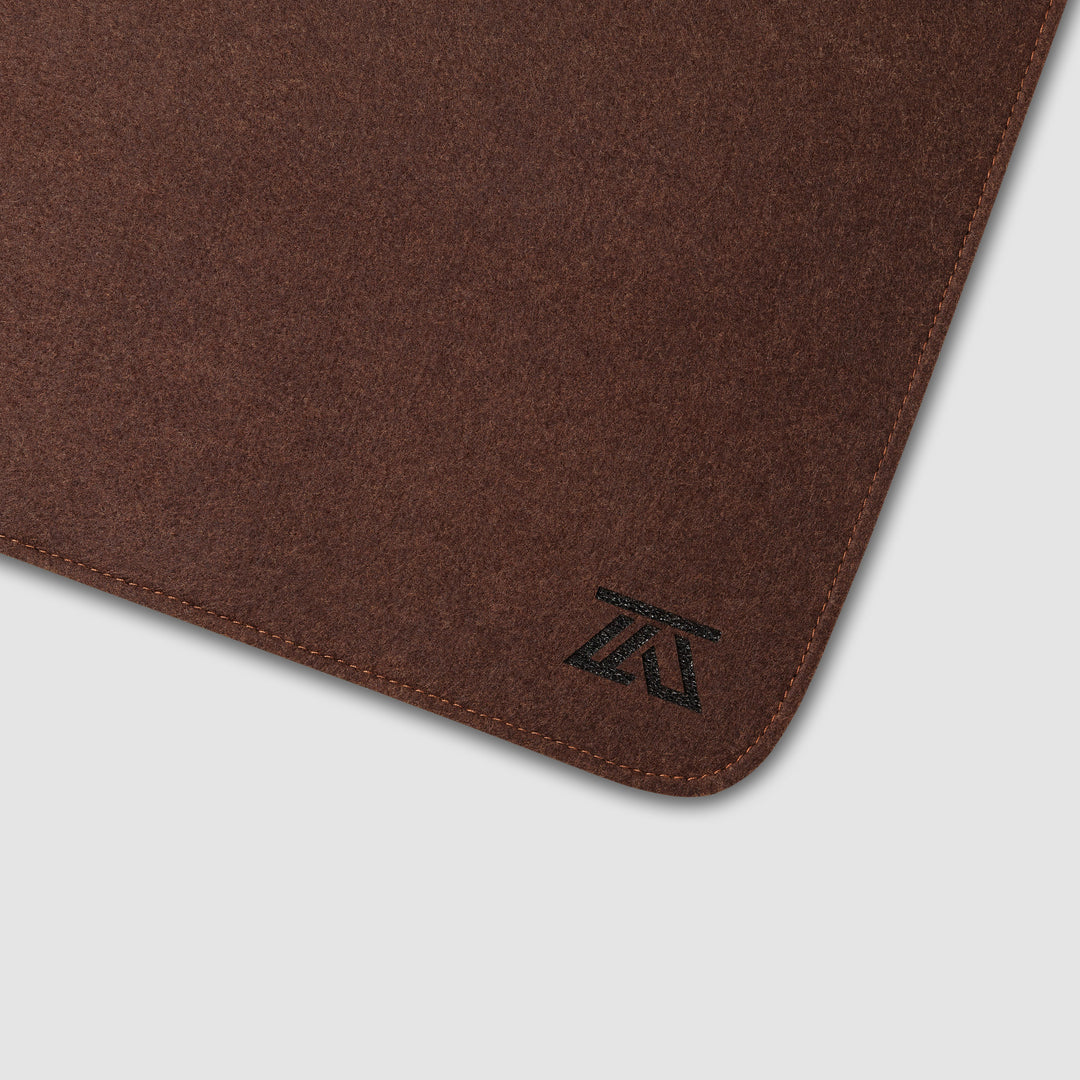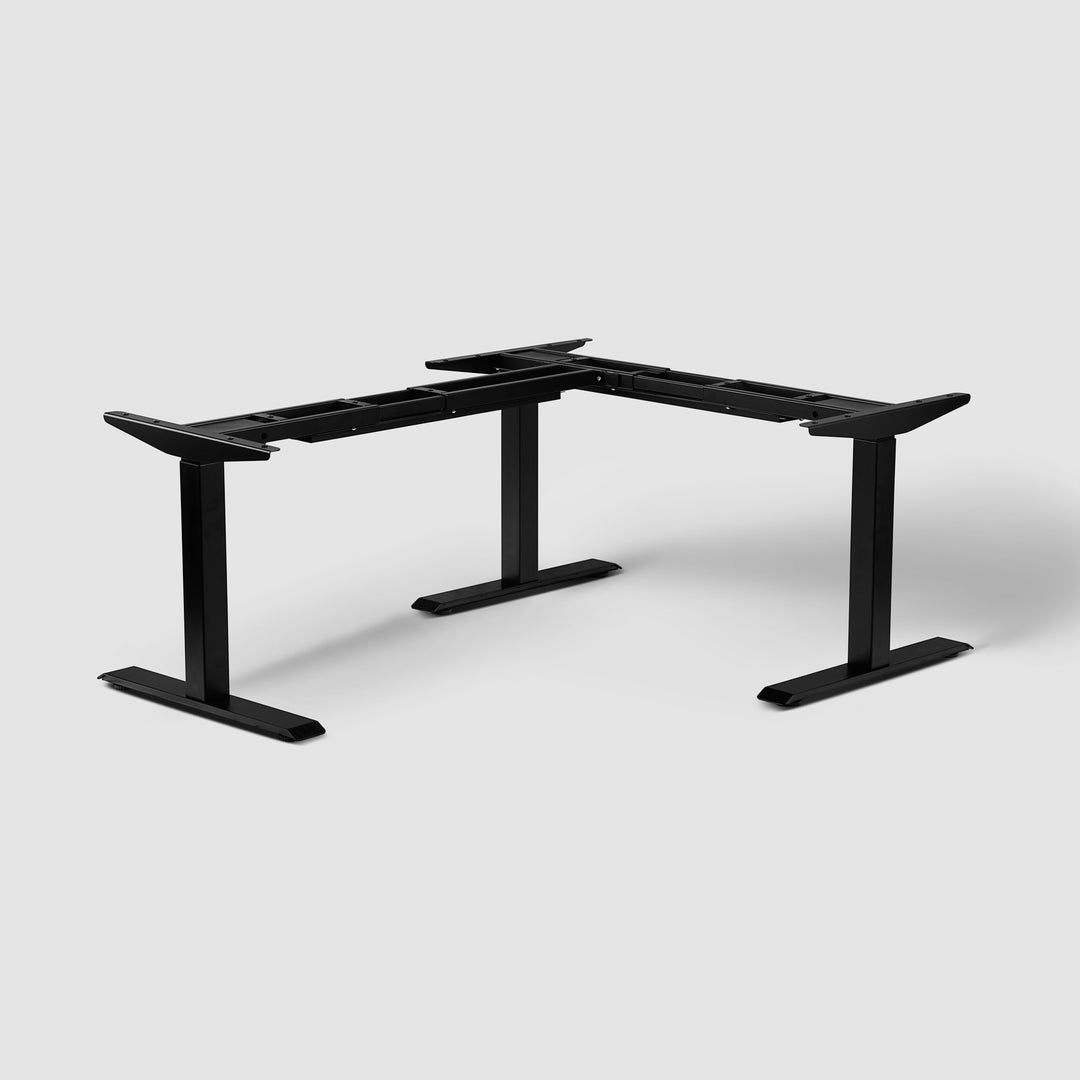Should You Stand at Work? 7 Health Benefits of a Standing Desk

Today, we’re throwing your conventional, cushion-loving desk chairs into the arena with their sleek, upright challenger – the standing desk.
When you think about it, the concept of work has drastically evolved over the years. We've moved from the sweat and toil of the fields, to the mechanized hustle of the factories, to the glow of computer screens in air-conditioned comfort. Now we wage wars of wits over keyboards, rather than fields. Our opponents? Deadlines, overflowing inboxes, and never-ending Zoom calls.
But, there's one opponent that's sneakier than all: The Office Chair. Sitting for long hours can play havoc with your health, a silent onslaught that creeps up unnoticed, manifesting in weight gain, heart disease, and back pain.
Enter our hero – the standing desk. At Fortis Concepts, we're going to talk about why this noble piece of office furniture doesn't just bring change to your workspace's aesthetics, but also promises to kick those sneaky health problems to the curb.
Ready? Let's go.
The Problem with Sitting All Day
You've likely heard the phrase "Sitting is the new smoking." A touch dramatic? Perhaps. But it does make a serious point. A sedentary lifestyle, characterized by prolonged periods of sitting and minimal physical activity, can lead to a variety of health problems.
Picture this: your body is like a sports car. It's designed to move, to feel the wind in its hair (or, uh, the breeze over its engine, if you prefer). But if you leave that car in the garage all day, things start to rust and degrade. Similarly, our bodies aren't designed for the hours upon hours of sitting that have become the norm in our digital age.
- Extensive periods of sitting can trigger a cascade of health issues including obesity, diabetes, elevated cholesterol, hypertension, heart ailments, and even stroke.
- A sedentary lifestyle can lead to muscle atrophy, particularly in the leg and gluteal muscles, paving the way for higher susceptibility to injuries.
- Consistent, lengthy durations of sitting can result in bulging discs between lumbar vertebrae, culminating in persistent pain.
- Individuals leading inactive lifestyles with extensive sitting have a staggering 147% increased risk of experiencing a heart attack or stroke.
1. Standing at Work Can Alleviate Back Pain
One of the most frequent grievances of office workers who sit all day is back pain.
To investigate if standing desks could alleviate this issue, several studies have been conducted on employees suffering from long-term back pain. Reports showed up to a 32% improvement in lower back pain after using standing desks for a few weeks.
A study by the CDC found that the use of sit-stand desks reduced upper back and neck pain by 54% in just four weeks. However, discontinuing the use of sit-stand desks reversed some of these improvements within two weeks.
2. Standing More Often Could Decrease Your Heart Disease Risk
The hypothesis that standing is better for heart health originated in 1953.
A study highlighted that bus conductors who stood all day had a 50% lower risk of heart disease-related deaths compared to their seated colleagues.
Subsequent research has confirmed the detrimental effects of sitting on heart health, with extended sedentary time potentially increasing the risk of heart disease by up to 147%. Even an hour of rigorous exercise might not compensate for the harm caused by a day of uninterrupted sitting.
It's clear that spending more time on your feet is a heart-healthy choice.

3. Choosing to Stand Diminishes Weight Gain and Obesity Risk
When it comes to weight gain, it all boils down to the balance between calorie intake and calorie burn. Excess calories end up as excess weight.
Though physical exercise is the most impactful way to burn calories, even a small choice like standing instead of sitting can make a difference. Comparing a standing afternoon to a sedentary one, standing has been found to burn over 170 extra calories. That's around 1000 calories over a week by just standing at your desk every afternoon.
This could be a contributing factor to why excessive sitting is strongly associated with obesity and metabolic disease.
4. Helps Maintain Your Blood Sugar Levels
In general, the more your blood sugar rises post meals, the worse it is for your health, particularly if you're dealing with insulin resistance or type 2 diabetes.
A small study revealed that office workers standing for 180 minutes post lunch reduced their blood sugar spike by 43% when compared to sitting for the same duration. It was noted that the number of steps taken by both groups was the same, suggesting that it was the act of standing that made the difference, not extra movement.
Another study showed that alternating between sitting and standing every 30 minutes throughout the workday resulted in an average reduction of blood sugar spikes by 11.1%.
Given the harmful impacts of sitting post meals, it's no surprise that excessive sedentary time is associated with a massive 112% higher risk of type 2 diabetes.

5. It Boosts Your Mood and Energy Levels
Standing desks seem to have an affirmative impact on overall wellness.
In a study spanning seven weeks, those who used standing desks experienced less stress and fatigue compared to their seated counterparts. Further, 87% of standing desk users reported an increase in vigor and energy levels during the workday.
Interestingly, when participants reverted to their old seated desks, their overall mood returned to previous levels. This supports broader research that ties prolonged sitting with an increased likelihood of depression and anxiety.
6. More Standing Could Potentially Prolong Life
Research has established a significant connection between extended sitting time and premature death. This correlation isn't surprising, given the links between sedentary behavior, type 2 diabetes, and heart disease.
An analysis of 18 studies revealed that individuals who sit the most have a 49% higher risk of early death compared to those who sit the least. Another study suggests that reducing sitting time to just three hours daily could increase the average American's life expectancy by two years.
While these are observational studies and don't establish causality, the body of evidence suggests that standing more often could potentially extend lifespan.
7. Standing at Work Boosts Your Productivity
While this one isn't exactly health-related, it's worth mentioning the potential productivity benefits of standing desks. After all, if you're a high performer at work, you're likely to have a more fulfilling career – which is great for your mental health.
As it turns out, standing desks may actually help with that. There's a large body of evidence that shows how standing at work has been linked to higher energy levels, creativity, and alertness.
- A study found that call center employees with standing desks were 45% more productive than their seated counterparts.
- Texas A&M University's Health Science Center School of Public Health conducted a six-month study that demonstrated a 23% increase in productivity during the first month of standing desk usage, which rose to 53% by the last six months.
- According to a research study, 71% of employees who reduced their sitting time by an hour each day experienced enhanced mental focus throughout the day.
- A study involving 60 young office employees established that using a standing desk for 4 hours each day had no detrimental effect on characters typed per minute or typing errors.
- A study funded by the American Society of Interior Designers Foundation’s (ASIDF) Transform Grant reported that 65% of participants experienced increased productivity when using a standing desk.
- Another study revealed that students who regularly used standing desks showed significant improvements in executive function and working memory capabilities.
Taken together, these findings suggest that standing desks can provide significant cognitive and productivity benefits across various settings, from offices to classrooms.
Balancing Standing with Sitting: Use A Sit-Stand Desk
Just as too much sitting is problematic, it's essential to recognize that non-stop standing isn't the panacea for sedentary lifestyle ailments.
If you're looking for a way to stay active throughout the day without standing non-stop, try using a sit-stand desk. This type of adjustable workstation allows you to quickly and conveniently switch between sitting and standing positions when needed.
At Fortis, we’ve got some premium adjustable standing desks for you to browse:
- The Square One: This simple and stylish adjustable desk is perfect for any home office or workspace. It features a manual height-adjustment lever that allows you to move from sitting to standing in an instant.
- The Edge One: This one has a more premium finish, with a natural live edge of masterfully handcrafted 1-3/4" thick USA-sourced black walnut. You get easy-access control buttons for effortless height adjustment. It also has a handy built-in power strip to keep your tech devices charged up.
Tips for a Successful Transition to a Standing Desk
- Start Gradually: Don't try to switch from sitting all day to standing all day abruptly. Start by standing for a few minutes every hour, then gradually increase your standing time as your body gets accustomed to the change. In the next section, we’ll provide you with a sit-stand schedule template.
- Use Proper Ergonomics: Make sure your desk is at a comfortable height, and your monitor is at eye level. This will prevent straining your neck or back.
- Invest in Comfortable Footwear and an Anti-Fatigue Mat: These can help to alleviate some of the discomfort associated with standing for prolonged periods.
- Listen to Your Body: If you start to feel fatigued or experience discomfort, sit down. The goal is to find a balance, not replace one extreme with another.
Sample Sit-Stand Work Schedule for Beginners
- 8:00-9:30 AM: Begin Seated - Start your day seated to ease into work. Use this time for tasks that require high concentration, such as writing reports or responding to emails.
- 9:30-9:45 AM: Stand Up - As you start to feel the effects of prolonged sitting, elevate your Fortis Concept desk to a standing position. Stand for about 15 minutes.
- 9:45-10:30 AM: Seated Work - Return to a seated position for another bout of intensive work.
- 10:30-10:45 AM: Stand Up - Time for another standing break. Use this time to stretch and give your posture a change.
- 1:00-1:45 PM: Back to Sitting - After lunch, sit down to let your meal digest. As the afternoon progresses, you can alternate between sitting and standing again.
- 1:45-2:00 PM: Stand Up - Stand for another 15 minutes. Do some light tasks during this period.
Once you feel more comfortable standing for longer periods, you can certainly adjust this schedule. For example, you could try a 30-minute standing and 30-minute sitting cycle. Or, if you don’t feel fatigued by standing throughout the day, go ahead and stand for as long as you like.
The important thing is to listen to your body and adjust accordingly.
Using a sit-stand desk may be just what you need to stay active and productive at work. With regular standing breaks, you can enjoy the many health benefits associated with standing desks and move closer to achieving a better work-life balance.
Good luck as you start your journey towards a healthier and more active lifestyle!
FAQs
1. How long should you be at a standing desk?
There is no one-size-fits-all answer to this, as it depends on your comfort and adaptability. However, a good starting point is to aim for 15-30 minutes of standing every hour, gradually increasing this time as your body gets accustomed to the change. Always remember that balance is key; the aim is not to replace sitting entirely but to add more movement to your workday.
2. Why is it good to use a standing desk?
Standing desks offer numerous benefits, including burning more calories, reducing the risk of weight gain, lowering blood sugar levels, reducing back pain, and improving mood and energy levels. By allowing you to easily transition between sitting and standing, they promote a more active workspace and help counteract the health issues associated with prolonged sitting.
3. Is it healthy to stand all day at a standing desk?
While standing has numerous benefits, standing all day isn't the solution either. Prolonged standing can lead to discomfort and other health issues like varicose veins. It's crucial to strike a balance between sitting and standing throughout the day. Aim for regular breaks, switching positions and moving around to keep your body active and avoid strain.
4. What are the cons of a standing desk?
While standing desks have many advantages, they can also come with some potential drawbacks if not used properly. Standing for long periods can lead to leg, foot, or back discomfort and may increase the risk of varicose veins. If your standing desk is not ergonomically set up, it can lead to neck or shoulder strain. Therefore, it's essential to ensure your desk is set up correctly, and you listen to your body, switching between sitting and standing regularly.
5. I exercise regularly. Do I still need a standing desk?
Even if you have a regular exercise routine, sitting for extended periods can still pose health risks. Dubbed the "active couch potato" phenomenon, research shows that the effects of long-term sitting are independent of physical activity level. So, while it's great that you're staying active, incorporating standing periods into your workday can further enhance your overall health and well-being.
6. Can't I just take more breaks from sitting instead of getting a standing desk?
Taking regular breaks from sitting is indeed beneficial, but these interruptions might impact your productivity and workflow. Each time you take a break, it takes a certain amount of time to refocus on the task at hand, which could affect your overall efficiency.
On the other hand, a standing desk allows you to transition between sitting and standing positions without breaking your work rhythm.





